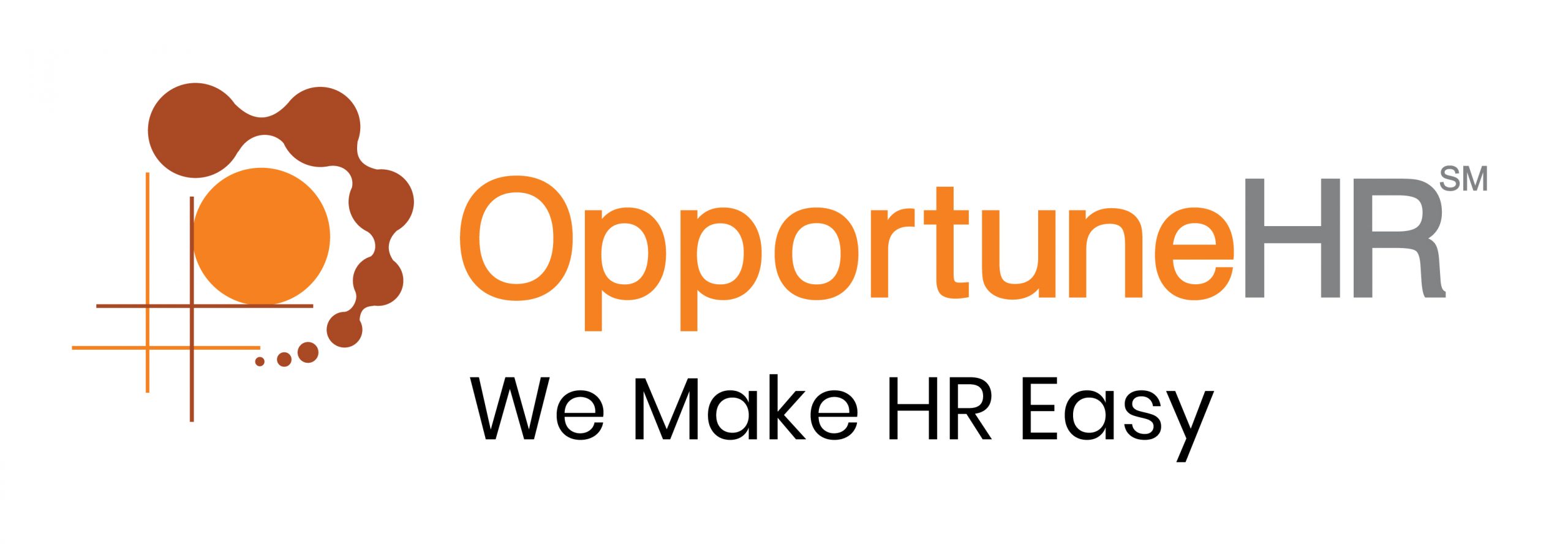
Discover Why OpportuneHR is the best HRMS Software in India! Schedule a Demo OR Call us @ +91 7700-954949

Fix an Appointment
Download PDF
Employees Master
Employee Master
An employee master is a centralized record that holds important information about company employees. It includes details like their name, address, contact number, job position, salary, and more.
It also contains the employee work history and other details like Aadhaar, PAN number, Provident Fund and insurance details. And includes employee affiliation with any special category.
This record helps HR departments and employers to keep track of employee information, manage payroll, and ensure legal compliance. It makes it easier to manage employee data and effectively handle the workforce.
Full name
The full name refers to the complete name of an employee as it appears on official documents, including their first name, middle name (if any) and last name.
It is important to maintain accurate and up-to-date information in an employee master file, including the employee’s full name, as it is often used for various HR processes such as payroll, taxation, and legal documentation. Additionally, some companies may also include additional information such as suffixes or titles in the full name field.
Family Details
In an employee master, family details typically refer to information about an employee’s immediate family members, such as their spouse or partner, children, and sometimes parents or siblings.
This information includes their names, dates of birth, contact information, and other relevant details.
Maintaining accurate family details in the employee master can be useful for various reasons. For example, it can help with emergency contacts and notifications in case of an accident or illness. It might also be useful for planning company events that involve family members such as picnics or holiday parties. Some companies may also use this information to offer specific benefits packages or to assist with relocation if needed.
However, it is important to ensure that any collection and storage of personal data comply with applicable laws and regulations governing data privacy and protection.
Contact Details
In an employee master, contact details typically refer to the information that allows the company to communicate with an employee.
This includes their personal and work-related contact information such as their mailing address, phone number, email address and emergency contact details.
Maintaining accurate contact details is essential for effective communication between the company and its employees. It helps to ensure that important messages are received in a timely manner, such as updates on company policies or procedures, benefits enrollment information or notifications about emergencies.
Additionally, accurate emergency contact details can be important in case of a workplace injury or other incident requiring immediate attention. Some companies may also use this information when planning company events or training programs.
It is important to protect the confidentiality of employee data and ensure that any collection and storage of personal information comply with applicable laws and regulations governing data privacy.
Address Current and Permanent
Current address refers to the physical location where an employee currently resides while permanent address refers to their long-term or permanent residence.
The current address may change frequently due to employee relocation or other personal reasons, whereas the permanent address is typically considered more stable.
It is important to maintain accurate and up-to-date information about both current and permanent addresses for several reasons. For instance, current address information is essential for payroll processing, benefits administration, and communication with employees.
On the other hand, the permanent address is useful for planning company events that require mailing invitations or sending gifts.
Ensuring accuracy of both types of addresses in the employee master can also be helpful in emergency situations where it might be necessary to contact family members in case of an accident or illness.
As with all personal data collected by companies, it’s important to ensure that any collection and storage of addresses comply with applicable laws and regulations governing data privacy.
Aadhar Details For Personal Identity
Aadhaar is a unique identification number issued by the Indian government to its citizens. It consists of a 12-digit number that serves as a proof of identity and address. In an employee master, Aadhaar details refer to an employee’s Aadhaar number and other relevant information related to their Aadhaar card.
In India, employers may require employees to provide their Aadhaar details for various purposes such as payroll processing and tax compliance. When collecting Aadhar details, it is important for employers to comply with applicable laws and regulations governing data privacy, including obtaining necessary consents from employees before collecting or using their personal data.
It is also advisable for employers to take necessary measures to protect the confidentiality of employee data, including storing it securely and limiting access only to authorized personnel who need such information.
PAN
PAN stands for Permanent Account Number, and it is a unique 10-digit alphanumeric identifier issued by the Indian government’s Income Tax Department to individuals, companies, and other entities who pay taxes in India.
In an employee master, PAN details refer to an employee’s PAN number and other information related to their PAN card.
Employers may require employees to provide their PAN details for various purposes such as processing salary payments and tax compliance. When collecting PAN details, employers must comply with applicable laws and regulations governing data privacy.
It is also essential for employers to take necessary measures to protect the confidentiality of employee data, including storing it securely and limiting access only to authorized personnel who need such information.
UAN
UAN stands for Universal Account Number, and it is a unique 12-digit number that is assigned to an employee who contributes to the Employee Provident Fund (EPF). In an employee master, UAN details refer to an employee’s UAN and other relevant information related to their EPF account.
The UAN serves as a single identifier for all of an employee’s EPF accounts across different employers. It allows employees to easily transfer their accumulated EPF funds from one employer to another, without having to initiate the transfer manually.
Employers are required by law to provide their employees with a UAN number and ensure that their EPF contributions are deposited into the appropriate account. Employers may also use the UAN number for various purposes such as monitoring employee contributions and processing employee claims related to their EPF account.
When collecting UAN details, employers must comply with applicable laws and regulations governing data privacy.
It is also important for employers to take necessary measures to protect the confidentiality of employee data, including storing it securely and limiting access only to authorized personnel who need such information.
Insurance
In an employee master, insurance details refer to information related to the various insurance policies that an employee is enrolled in, either through their employer or on their own, such as life insurance, health insurance, disability insurance and others.
Employers often offer insurance coverage as part of the benefits package they provide to employees. This can include group health insurance plans, life insurance policies or other types of coverage. Maintaining accurate and up-to-date information about employee insurance in the employee master can help employers manage these benefits effectively and provide better support to employees who may need assistance with claims processing or other issues related to their coverage.
When collecting and storing employee insurance data in the employee master file, it is important for employers to comply with applicable laws and regulations governing data privacy. Employers should obtain necessary consents from employees before collecting or using their personal data and take appropriate measures to protect the confidentiality of this information.
CV
An employee’s CV (Curriculum Vitae) typically refers to a document that provides a summary of the employee’s educational qualifications, work experience, skills and other relevant details.
The CV is often used as a reference by employers when making decisions related to promotions, job transfers or other HR decisions.
Including an employee’s CV in the employee master file can help employers keep track of their employees’ skills and experience and identify potential candidates for new opportunities within the company.
It is important for employers to take appropriate measures to protect the confidentiality of employee data, including storing it securely and limiting access only to authorized personnel who need such information.
DOB
DOB typically refers to an employee’s date of birth. This information is often collected during the hiring process and then stored in the employee master along with other personal and employment-related information.
The DOB is useful for various HR processes such as calculating age, determining eligibility for certain benefits or retirement plans, and complying with age-related laws such as minimum age requirements for certain jobs. Accurate DOB information can also be important for verifying identity or ensuring compliance with immigration or other regulations.
It is essential to take necessary measures to protect the confidentiality of employee data, including storing it securely and limiting access only to authorized personnel who need such information.
Joining Details
Joining details refer to the information related to an employee’s date of joining with the company. This includes the start date of employment, job title, department, manager and any other relevant details related to their onboarding process. [Probation period, location, Terms of employment signing]
Maintaining accurate joining details in the employee master is important for various HR processes such as payroll processing, performance management and benefits administration. For example, it helps to ensure that employees receive their salary and benefits on time. It can also be useful in tracking employee performance over time and making decisions related to promotions or transfers.
Storing joining details securely and limiting access only to authorized personnel who need such information is essential in protecting the confidentiality of employee data.
Exit Details
In an employee master, exit details refer to the information related to an employee’s separation from the company. This includes their last day of employment, reason for leaving, job title and department.
Maintaining accurate exit details in the employee master can be important for various reasons. For example, it helps employers understand why employees are leaving and take necessary steps to address any issues that may be contributing to high turnover rates. It can also help in determining eligibility for certain benefits such as severance pay or unemployment benefits.
Storing exit details securely and limiting access only to authorized personnel who need such information is essential in protecting the confidentiality of employee data.
Medical History
Medical history typically refers to an employee’s health-related information such as their medical conditions, allergies, medications or treatments.
Collecting and storing employee medical data can help employers manage employee benefits such as health insurance and provide better support to employees who may need accommodations for their medical needs. It can also assist in emergency situations where first responders may need to know about any pre-existing conditions or medications.
However, collecting and storing medical data is highly sensitive, and employers must ensure that they comply with applicable laws and regulations governing data privacy. Employers should take appropriate measures to protect the confidentiality of this information.
Handicap Category
Handicap category typically refers to the information related to an employee’s disability status. This includes information about any physical or mental disabilities that an employee may have and may require accommodations to perform their job duties. The government offers tax benefits too
Collecting and storing data related to an employee’s disability status can help employers provide necessary accommodations for employees who need them and ensure compliance with legal requirements related to it.
Language
Languages refers to the information related to an employee’s language skills. This includes any languages that an employee is proficient in, including their native language and any additional languages they may have learned.
Collecting and storing data related to an employee’s language skills can be useful for various HR processes such as recruiting employees for positions where multilingual abilities are required, assigning employees to specific roles where certain languages are needed or organizing training programs that require specific language skills.
Employee Work Category
Work category refers to the type of employment that an employee is engaged in. This includes their job title or position, whether they are full-time or part-time employees, their employment status (such as permanent, temporary, contract, etc.), and any other relevant details related to their job duties.
Data related to an employee’s work category can help employers manage various HR processes such as payroll processing, benefits administration and performance management. It can also be useful in determining eligibility for certain benefits or training programs.
It is also important for employers to ensure that employees are properly classified based on their job duties and responsibilities in order to comply with legal requirements such as minimum wage laws or overtime pay regulations.



